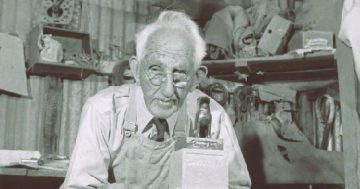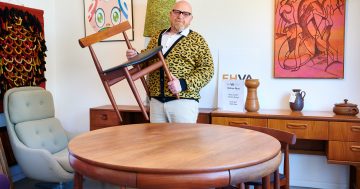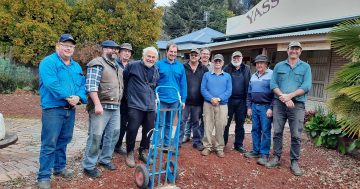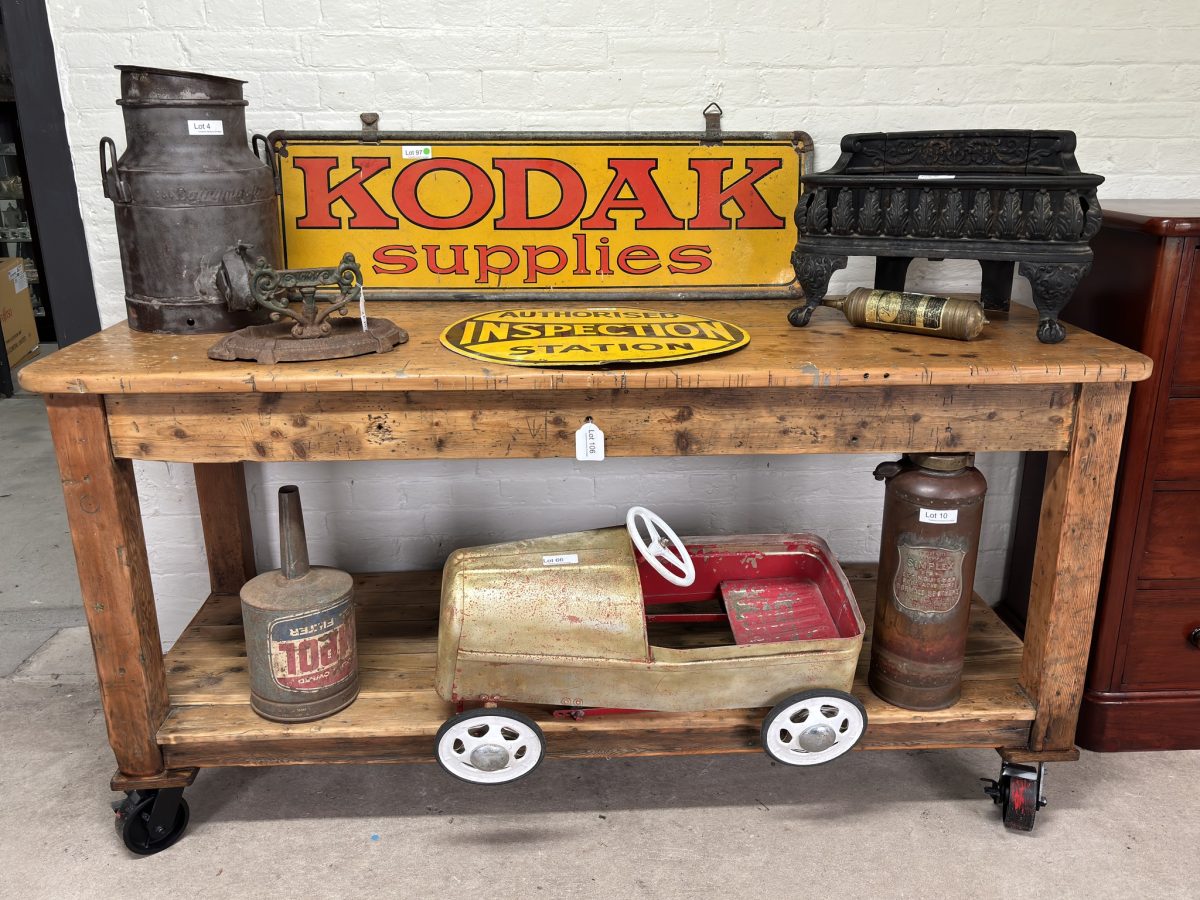
From a classic Kodak advertising sign to a child’s car – they all went under the hammer at the recent auction at Gundagai. Photo: Tuckerbox Auctions.
Why is it other people’s junk is so much better than your own? Why when you go to the op shop, tip or recycling centre to get rid of your stuff, do you come home with more of someone else’s?
Probably the same reason there are always, in every op shop you visit, empty Moccona bottles on the shelves, usually next to clunky white coffee mugs with the words “Irish Coffee” sprawled across them. Or lumps of casserole dishes adorned with flowers that you’re convinced are the same ones that went for thousands of dollars in an American junk shop. Or that Chanel handbag – yep, it’s definitely genuine. No, it’s not, but they’ll all look nice, from a distance, in your Good Room.
I often spend days going through other people’s junk with one of my favourite people, let’s call her Elizabeth, because that’s her name. She’s as smart as a whip, knows her stuff when it comes to Australiana – from books to pottery and all the shiny stuff in between – so when we heard about an auction at Gundagai, about an hour or so away, we were so there.
The main bit was in a nondescript shed. But once you got inside, there was that unmistakable whiff of that smell, of treasures hiding somewhere – or just that “old” smell.
Sadly, there was still a lot of brown furniture around. Sad, because they are pieces made by craftspeople, many created a century ago that no-one today wants. Once they’d sell for almost what they’re worth. But today, they most likely will head back to the storage shed when they fail to sell.
The auction room was full when we arrived. Three women sitting up the front looked like they belonged, blokes with hats glued down to their eyebrows had their eyes trained on the old petrol signs and other car stuff that looked so old it had to be genuine. And then there were a few ring-ins like us.
On the way in I spotted an old basket, about the height of a teenager, woven together perfectly in cane, with a smell that transported me into the shearing shed. Yep, it was kept for the best superfine wool, its lifetime of lanolin making it as smooth as. I was going to bid big for it, but when it later gambolled into three figures, I sheepishly bowed out.
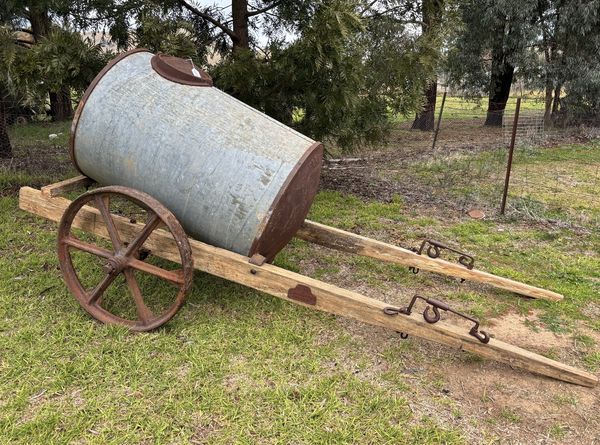
This old water carter was one of the highlights of the recent auction at Gundagai. Photo: Tuckerbox Auctions.
People were there with a purpose. One couple pulled up in their ute outside, complete with its trailer about double the length of the ute. We found out they had come for one thing and one thing only – an old water carter. I couldn’t see if it was the real thing or a furphy, but it certainly looked the business. The folk kept bidding till they nailed it.
Everyone had a purpose that day. The auctioneer telling us we had to buy what he was selling because he’d sold a similar one weeks ago for twice the price. The women up the front, so well known that the auctioneer knew their number(s), and that, well, as if we didn’t know, everything old was new again.
But it got so much better, an education, even.
Did you know the next big thing is, wait for the sparks to die down and before the horse bolts, blacksmithery. Everything black and charred is hot again. Blacksmith tools of all descriptions that looked like they had never shined at anything in life before, went for big money. But nothing compared to what had to be the star of the show, if not the heaviest – an anvil. It sold for a grand price. Literally.
So if you’ve had enough of collecting crockery from those fancy factories that you never drink out of because you’re not Hyacinth Bucket (pronounced Bookay); bags from Chanel; or first edition books with the author’s name scrawled across the first inside page in biro, despite the fact they were published way BB (Before Biro), why not have a crack at blacksmithery – hopefully you won’t get burned.












